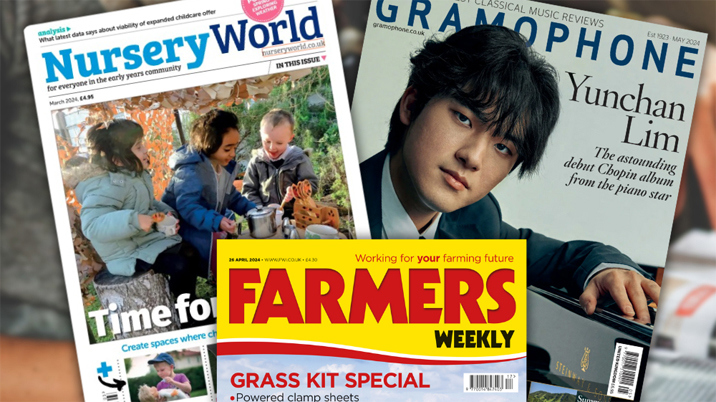
In an age of AI assistants, digital planning tools and productivity software, the humble jotted to-do list remains a cornerstone of workday management. And, even if you’ve abandoned it for something smarter and shinier, it’s still a to-do list. A Gen-Z new starter recently asked me for my recommendation on how they should manage their to-do list and I simply said the world was her oyster and it was up to her to choose; I was just glad she asked the question.
We use Monday (not an ad, many other providers are available…) to manage our events and projects on Farmers Weekly (FW) and many in the team have created their own personal boards to act as their to-do list (now including the new starter). It works incredibly well for projects with stakeholders from different departments. We have a board set up for all such projects and in a weekly meeting, we go through line by line and get updates from the team on each point. But even without that meeting, anyone can dip into it and check on progress very easily.
Over the years, my personal to-do list has lived on Monday, Trello and even the standard Microsoft Planner, but I always find managing these boards takes up more time than the benefit gained from them and return to my trusted notepad. Of course, this is my opinion, not a recommendation, the important thing is that you have a to-do list somewhere!
The real challenge is deciding what should go on your to-do list and what you should prioritise.
As head of marketing at the Mark Allen Group (MAG), I work across multiple business units, including MA Agriculture (the home of FW) and MA Education and Music (with a variety of titles from Gramophone to Nursery World). Within these areas, I have responsibility for subscriptions, newstrade, the other products, events and services the brands offer their varied audiences as well as management responsibility for a team of five. This makes a to-do list tricky, to say the least!
When thinking about both my short and long-term to-do lists, I like to break them down into three segments.
- Core activity (must happen)
- Long-term business objectives (also must happen)
- Team nurture and development (definitely must happen!)
The trap here is that, of course, all of these must happen but so often, we can be so focused on the core activity that work aligned with the long-term business mission / vision or management responsibility can fall by the wayside.
Core activity
For subscriptions, the largest revenue driver my team have responsibility for, we’ll create a plan of core activity. This includes discounted or value driven promotional campaigns, planned for certain times of the year as well as standard monthly activity like new issue emails and social media activity to mention but a few. If using something like Monday, you can set deadlines for when activity needs to be live and that can feed into your own personal board or daily to-do list. If not, a good tip is to use your Outlook calendar to set deadlines or even book out slots to do certain tasks.
We also created a longer-term roadmap (still a to-do list) to plan other projects that impact subscriptions. This can include campaigns but also includes things like updating renewal series or welcome / nurture series, testing new activity (this year, we’re trialling telemarketing) or any other ideas you have, to drive new acquisition or increase renewal percentages. We’ll set the roadmap, communicate it to senior stakeholders then review it monthly, at a minimum, if not weekly during key periods.
Long term business objectives
On FW, we’ve spent a significant time creating a long-term plan linked to a ‘North Star Metric’ (a guiding metric for long-term success). For us, it’s increasing the volume of paid users engaging with our digital products. In theory, most of our work should be at least partially focused on how we increase that number. Like all businesses, we also have a revenue target, but all our work needs to either bring in the revenue we require or help us reach our long-term vision to keep the business profitable and sustainable long into the future.
Too often, hitting that revenue target (in itself a short-term objective) can take up the majority of our time, energy and focus, so to ensure we put enough of these things into the long-term business strategy projects, to-do lists are integral to ensure this work is prioritised at least some of the time. Regular meetings and business reviews help us to stay accountable to this.
Team nurture and development
In my experience, some businesses are better than others at this, and even within businesses some teams or managers are great at this where others abandon it completely! Regardless of how much emphasis your HR team or senior leadership put on personal development, it’s always down to an individual manager to ensure it gets prioritised.
As a manager of five, my top priority is ensuring the team are happy, motivated and on the right path for their careers. Yes, it’s the right thing to do, but you will find it’s easier to achieve your other business objectives with a healthy, happy team. You also increase the chances of retaining talent within the business.
With many businesses adopting at least partial flexible working, it’s more important than ever to make sure regular team meetings are a staple on your to-do list. With some team members, I have a weekly 121 booked in the diary to ensure they have everything they need, have the right things on their to-do lists and just check they’re ok! More experienced staff likely don’t need as much attention / guidance, but you should make a careful decision based on that individual’s personality and experience.
All staff should have a personal development and objective setting session around the start of the financial year with meetings also booked throughout the year to check in. They need to be 100% clear on what I need them to achieve within certain timeframes but also what they need to achieve for their own development. If it’s not on the to-do list, it becomes incredibly unlikely to happen!
Ensuring people take up appropriate learning opportunities is also key and often the first thing to get missed from to-do lists. MAG recently signed up to a digital learning and development platform with countless courses and resources available. One of the best parts of it is that managers can assign courses to their staff they think will benefit them. This puts it on their list for them and ensures they’re prioritising a non-urgent activity which helps both the business and the individual in the long term.
Collaboration is key
A major part of why products like Monday are so popular is the ease with which to-do lists become a collaborative process. Your to-do list for the day is a very personal thing but without collaboration, you lose accountability and productivity. My boss doesn’t need to know everything that’s on mine but he should be able to have a good, educated guess at what is. We’re all human, and it’s easy for things to fall down the list of priorities, get moved to tomorrow, next week or next month. That’s fine and will happen from time to time but the most important part of a to-do list is ensuring not only the right things are on it but that they actually get done!
What I’m working on now
There’s a lot of exciting activity going on across the business, but I thought I’d provide some detail into a few projects currently high up on my to-do list.
• New customer data platform: We’re fortunate enough to be rolling out a customer data platform (CDP). Following the lengthy process to connect up the various data streams (hats off to the data team here), we’ve begun to launch activity across the brands. For the uninitiated, this technology will give us the ability to create customer segments based on both demographic and behavioural data to give them different experiences across our websites and email activity.
The first test case was built around subscriptions. We built a segment of ‘engaged’ websites users (based on volume of visits within a period) who we know are not paying subscribers, then offer them a “BEST OFFER” pop-up at the bottom of the screen inviting them to subscribe. In theory, these are our warmest leads, those who are engaged with our content and therefore most likely to subscribe.
The results have been excellent on the brand websites with high volumes of traffic (eg. Gramophone.co.uk) and less good for those with lower traffic. The challenge for the brands with lower traffic is how we can use the CDP to get people to the sites and stay there for longer. With this kind of tech, the options are endless, but a great example would be suggesting articles to read based on what we know they’ve already looked at or using relevant content to encourage registering for newsletters. Classic top of funnel marketing we’ve only been able to do very simply and generically previously.
With so many possibilities and so little time, we’ll be prioritising the projects with the greatest revenue opportunities first, then moving on to how we tighten up and personalise user experience across all our touchpoints.
• Website re-designs: Who knew? What felt like your new brand website is five years old and in massive need of an overhaul (thanks Covid for warping time). The internet seems to evolve faster with each passing year and with it, how people use it. The days of homepages with a thousand clickable links are long gone, replaced with clever navigation bars, clear CTAs or messaging, personalised content (where possible) and dominant visuals. Every redesign project is a fantastic opportunity to make significant improvements to sites without re-inventing the wheel.
These are collaborative projects, bringing together editorial, sales and marketing all held together by a very patient development team (ours at MAG is phenomenal). As a marketeer, I like to insert myself into the core of these projects to ensure as many boxes are ticked from the various departments and making sure the audience is at the heart of everything, and decisions made are data driven where possible. This must be both quantitative and qualitative; what do people say they want vs want does their activity tell us they actually want.
We’ll be updating all the education brand sites and our e-commerce site, magsubscriptions.co.uk, this year and expect a significant positive impact on dwell times and conversion, especially alongside CDP activity.
I’d love to tell you more, but I’m out of word count and I’m behind on my home and family to-do list. Next up, paint nursery…












